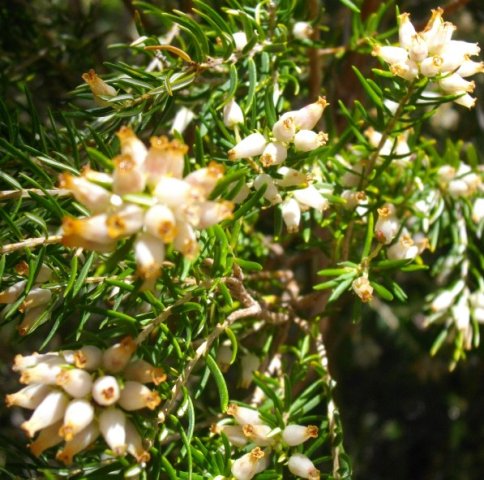Erica afra

Author: Ivan Lätti
Photographer: Ivan Lätti
Erica afra, previously E. caffra, the water heath, is one of the few ericas that may grow into a small tree, listed as such in the South African Tree List (No. 572).
The bark is dullish grey, becoming fissured on old stems. New branches are many on thriving plants and slender. The leaves are small, grow in whorls of three, are dark green, ericoid, i.e. narrow to needle-like with edges rolled under.
The flowers are medium-sized for Erica, conical or urn-shaped, white or creamy in colour. They last long on the plant and turn a rusty brown with age, as can be seen on the corolla lobes in picture. The plant is characterized by the strong sweet scent when blooming (in winter, spring and into summer).
The species distribution is remarkable: fynbos down to the coast (where 660 of the 860 Erica species are found), as well as on the summer rainfall east coast of South Africa in the Eastern Cape and KwaZulu-Natal and inland in the Free State and Lesotho. The widely distributed variety is E. afra var. afra, while var. auricularis only grows in the Western Cape. This photo was taken during October in the Harold Porter National Botanical Garden where some specimens stood about 5 m tall.
The habitat is fynbos, along watercourses and montane grassland to altitudes around 1800 m. Both the habitat populations of the two varieties are deemed of least concern early in the twenty first century (Manning and Helme, 2024; Manning, 2007; Coates Palgrave, 2002; Baker and Oliver, 1967; www.plantzafrica.com; http://redlist.sanbi.org).

